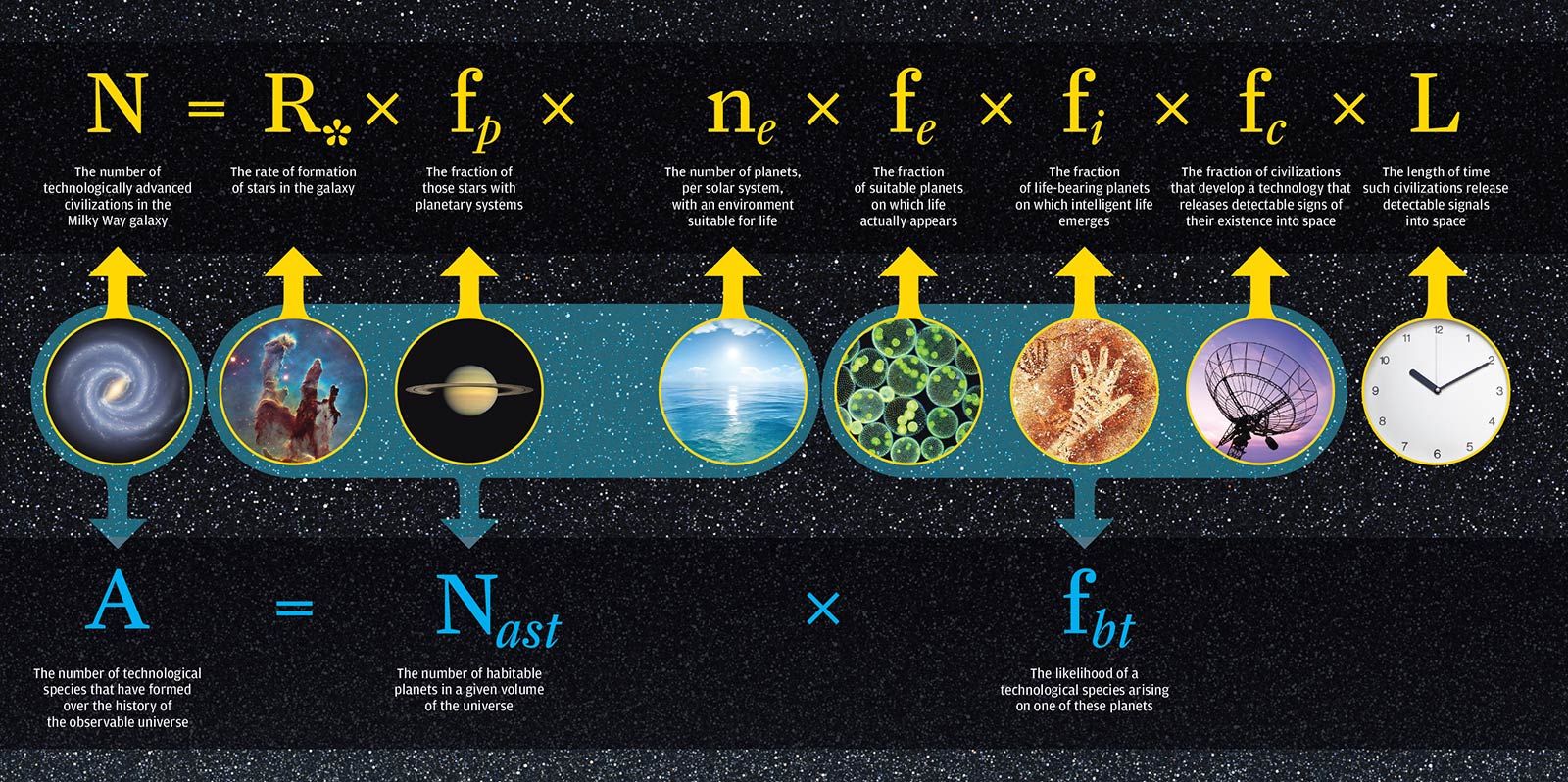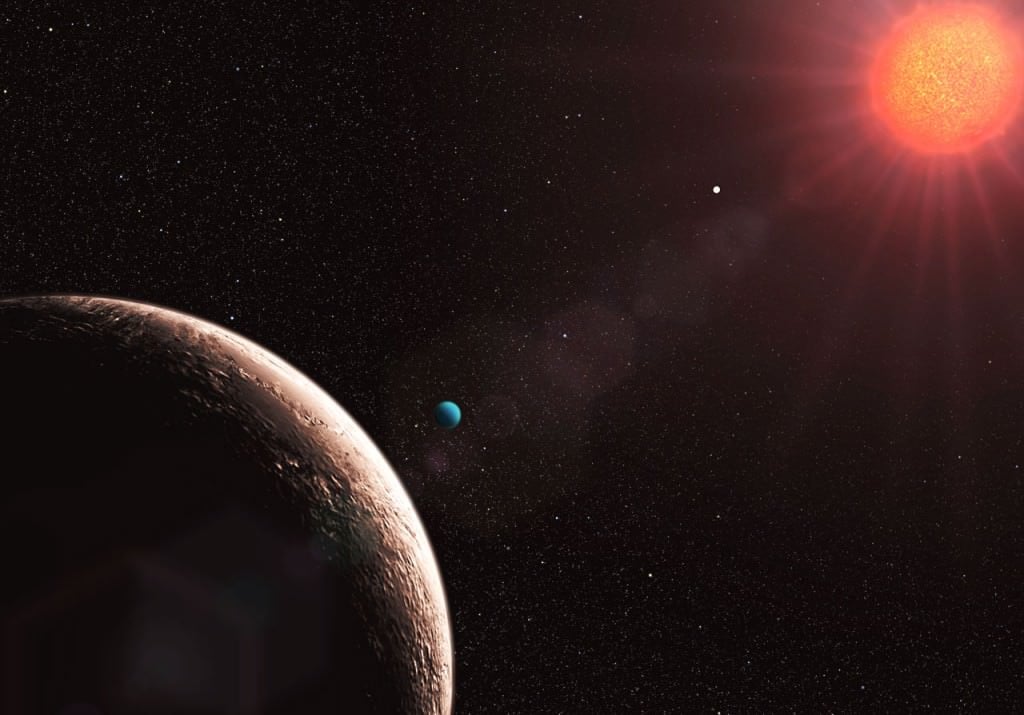The Fermi Paradox won't go away. It's one of our most compelling thought experiments, and generations of scientists keep wrestling with it. The paradox pits high estimates for the number of civilizations in the galaxy against the fact that we don't see any of those civs. It says that if rapidly expanding civilizations exist in the Milky Way, one should have arrived here in our Solar System. The fact that none have implies that none exist.
Many thinkers and scientists have addressed the Fermi Paradox and tried to come up with a reason why we don't see any evidence of an expanding technological civilization. Life may be extraordinarily rare, and the obstacles to interstellar travel may be too challenging. It could be that simple.
But a new paper has a new answer: maybe our Solar System doesn't offer what long-lived, rapidly expanding civilizations desire: the correct type of star.
To understand the Fermi Paradox, you need to understand the Drake Equation. The Drake Equation is a probabilistic estimate of the number of civilizations in the Milky Way. It doesn't tell us how many civs there are; it summarizes the concepts we have to wrestle with if we want to think about how many civilizations there could be.
A critical component of the Drake Equation concerns stars. The Equation considers the rate of star formation in the galaxy, how many of those stars host planets, and how many of those planets could host life. The Equation gets more detailed by asking how many of those planets develop life, how much of that life becomes technological civilizations, and how many of those civilizations reveal their presence by releasing signals into space. Finally, it estimates the life spans of those civilizations.
By using different variables to answer each of those questions, we get different estimates of how many technological civilizations there might be. It's a thought experiment, but one informed by evidence, though the evidence is rudimentary.
A new paper addresses the Fermi Paradox by focusing on star types. It says that not all types of stars are desirable to an expanding technological civilization. Low-mass stars, particularly K-dwarf stars, are the best migration targets for long-lived civilizations.
The paper is " Galactic settlement of low-mass stars as a resolution to the Fermi paradox," and the Astrophysical Journal has accepted it for publication. The authors are Jacob Haqq-Misra and Thomas J. Fauchez. Haqq-Misra is a Senior Research Investigator at the Blue Marble Space Institute of Science in Seattle, Washington. Fauchez is a Research Assistant Professor in Physics from the American University in Washington, DC.
The paper begins with a summary of the Fermi Paradox: "An expanding civilization could rapidly spread through the galaxy, so the absence of extraterrestrial settlement in the solar system implies that such expansionist civilizations do not exist," the authors plainly state.
The authors point to one of the most famous analyses of the Fermi Paradox. It came from American astrophysicist Michael Hart in 1975. Hart's paper was " An Explanation for the Absence of Extraterrestrials on Earth," and it was published in the Quarterly Journal of the Royal Astronomical Society. It's considered to be the first rigorous analysis of the paradox. In his paper, Hart showed how a civilization could expand through the galaxy in a period of time shorter than the galaxy's age. Hart explained what would happen if a civilization sent out colony ships to the nearest 100 stars. They could colonize those star systems, then each of those colonies could do the same, and the process could keep repeating.
"If there were no pause between trips, the frontier of space exploration would then lie roughly on the surface of a sphere whose radius was increasing at a speed of 0.10c," Hart wrote. "At that rate, most of our Galaxy would be traversed within 650,000 years." Hart pointed out that a technological civilization would've had ample time to reach us unless they had started less than two million years ago. For Hart, the only explanation for the lack of evidence of alien civilizations is that there are none.
In his paper, Hart arrived at a couple of conclusions: SETI and similar efforts are a waste of time and money, and if anyone colonizes our Solar System, it'll probably be our descendants who do it.
The authors of this paper disagree.
An underlying assumption for many people who contemplate the Fermi Paradox is that stars are uniformly attractive to a spacefaring civilization, and the civilization would spread everywhere equally. But is that true?
The authors of this new paper don't think so. "We suggest, following the hypothesis of Hansen & Zuckerman (2021), that an expanding civilization will preferentially settle on low-mass K- or M-dwarf systems, avoiding higher-mass stars, in order to maximize their longevity in the galaxy," they write.
Gauging stars by their longevity isn't intuitive to humans. If one type of star lasts 10 billion years and another lasts 10 trillion, what difference does it make to anyone but an astrophysicist? But now, imagine you're part of a decision-making body for a civilization that is a million years old—or even older—and has expanded to different solar systems. Then, a star's age matters to you.
K dwarfs and M dwarfs (red dwarfs) are long-lived. Even for an extraordinarily advanced civilization, colonizing another solar system would require lots of resources. Why expend those resources on a star system that might not last long?
The authors of this new paper calculated a new estimate for the time a galactic civilization needs to colonize the galaxy if that civilization only targeted K dwarfs and M dwarfs. They say it would take two billion years for a galactic civ to reach all low-mass stars. "This would require interstellar travel capabilities of no more than about 0.3 ly to settle all M-dwarfs and about 2 ly to settle all K-dwarfs," they write.
With greater travel capabilities, the civilization could dramatically reduce the two billion-year time span. "Even more rapid expansion could occur within 2 Myr, with travel requirements of about10 ly to settle all M-dwarfs and about 50 ly to settle all K-dwarfs."
These estimates are based on a civilization spreading through the galaxy in waves. There would be periods of time where the civ would be waiting for a close approach by a favourable star. The authors make the case that "... civilizations can leverage close stellar encounters to rapidly expand across the galaxy without the need for relativistic spaceflight."
The authors say that the 2 Myr settlement scenario can safely be rejected. "However, this scenario, as well as full galaxy settlement, can be excluded based on our assumption that the solar system has not been settled." They also say that the overall lack of evidence for any other civilizations supports their low-mass star hypothesis. "But the lack of extraterrestrial settlement of the solar system remains consistent with expansion that is limited to half the galaxy, M-dwarf stars, or K-dwarf stars," they write.
The authors think that there could be a low-mass star, Galactic Club spreading through the Milky Way right now, and we can't rule it out just because we haven't noticed it. The absence of evidence isn't evidence of absence, as the adage goes. "In particular, we note that a low-mass Galactic Club, originating from a parent G-dwarf system, would have had plenty of time to develop in the history of the galaxy without us taking any notice of its activities," they write.
What would drive a species to expand continuously? Population growth? Energy needs? Scientific curiosity? Dominion over others? "But we do not know much more about whether or not such galactic-scale expansion would be commonplace or desirable for technological civilizations in general," they write.
For us, there's no way of knowing. Modern humanity is only about one-quarter of a million years into its journey. We've been using agriculture for only 10,000 years and made our first tentative steps into space only a few decades ago. The motives that drive us and the thought framework that guides us aren't exactly time-tested. We can do little more than wonder about the sociological structure of an ancient spacefaring species and if their drive to expand would continue. Maybe it seems pointless after a while.
The authors say it's still worth looking for signs of another civilization expanding, if only to place more evidence-based constraints on our ponderings. And our target should be low-mass stars. "The search for technosignatures in exoplanetary systems can help to place constraints on the presence of such a "low-mass Galactic Club" in the galaxy today." They disagree with Hart that SETI and similar endeavours are a waste of time and resources.
Time is the Master of our Universe. From our own lifespans to the ages of alien civilizations to the life and death of stars and planets, time rules it all. Relativity might fiddle with time, but it can't stop it from passing.
We don't know what kind of civilizations there might be and how they might manage and perceive time. Are we biased by our own experience? Certainly, we are. But what if alien life is so different that our attempts to even discuss the Fermi Paradox need a course correction? What if their whole understanding and experience of time are wildly different from ours?
What if aliens have mastered life extension and live so long that individuals can be part of multiple expansions into other star systems? What if they're not strictly individuals like us but are some sort of hybrid of an individual and genetic collective? What if they can take in new genetic information in ways we can't imagine? What if breeding is hopelessly outdated to them, and they're free from those concerns and the limits of a short life span? What if they're not even organic beings anymore and the kinds of things that motivate us are in their distant past? What if they're symbionts? What if there are hundreds of other what-ifs?
What if their societies are so different that there is no need to expand? What if expansion itself isn't worth it? That would seem to doom civilizations to death when their planet stops supporting life. But what if they sidestep it somehow? But what if there are a hundred other things we can't think of?
Things we can't think of are sort of useless except to acknowledge they exist.
This is the end-point of many discussions around the Fermi Paradox and the Drake Equation. There's so much we don't know; we can't even really understand that we don't know it. Humanity is still a toddler.
But humans are curious, and it's one of our most lovable traits. Scientists like Haqq-Misra and Fauchez are driven to ponder these things. Are they right? Are they wrong?
Is there an expanding galactic civilization in the Milky Way?
We may never know. But we should keep looking.
 Universe Today
Universe Today





